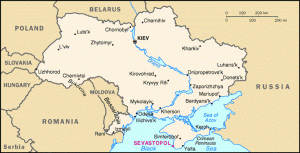Reconstruction of Sevastopol, following the Nazi’s attack on this vital naval city, started the Soviet’s regime of rebuilding the country’s architecture and infrastructure. The Soviet Union created the Committee on Architectural Affairs; I think this is a testament to the State’s commitment to rebuild cities with the State’s ideal in mind. The Soviet Union wanted these new building to be dedicated to the great heroes such as Marx and Lenin. Streets and squares were renamed in an attempt to return to historical roots. As the article, “To Agitate and to Render Service: Replanning the Hero-City Sevastopol” says, “name changes suggested political shifts.”
A problem with housing emerged as the city of Sevastopol was rebuilt. Although promised adequate housing, overcrowded and infectious residences were overwhelming. The money of the State had gone to other projects and resources to fix these housing dilemmas were in short supply. People began taking matters into their own hands; workers began building housing illegally, without approval of the State. With poor, overcrowded housing came poor hygiene, causing a spike in disease. These health problems could not be fixed due to the lack of equipment such as x-ray to diagnose patients.
Could these health problems have been avoided or with overcrowded, non-regulated housing, was it inevitable?

